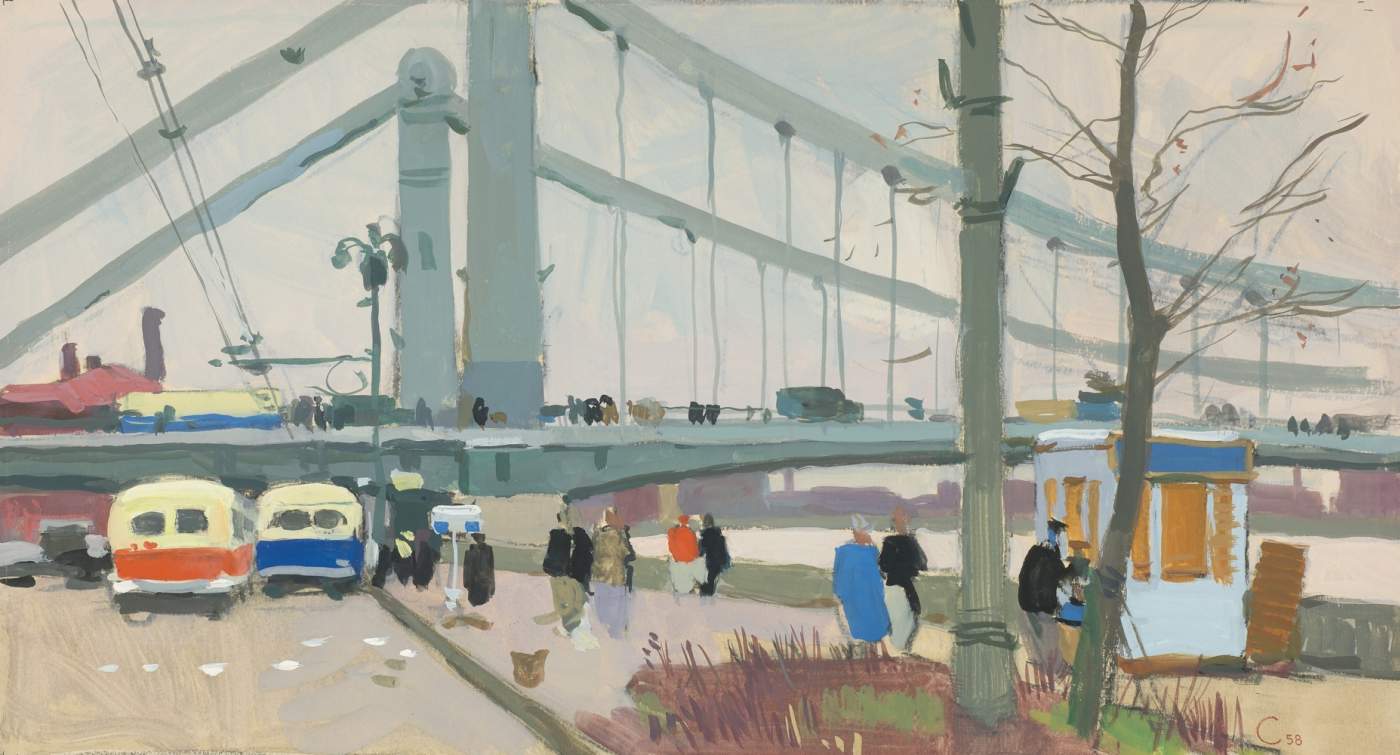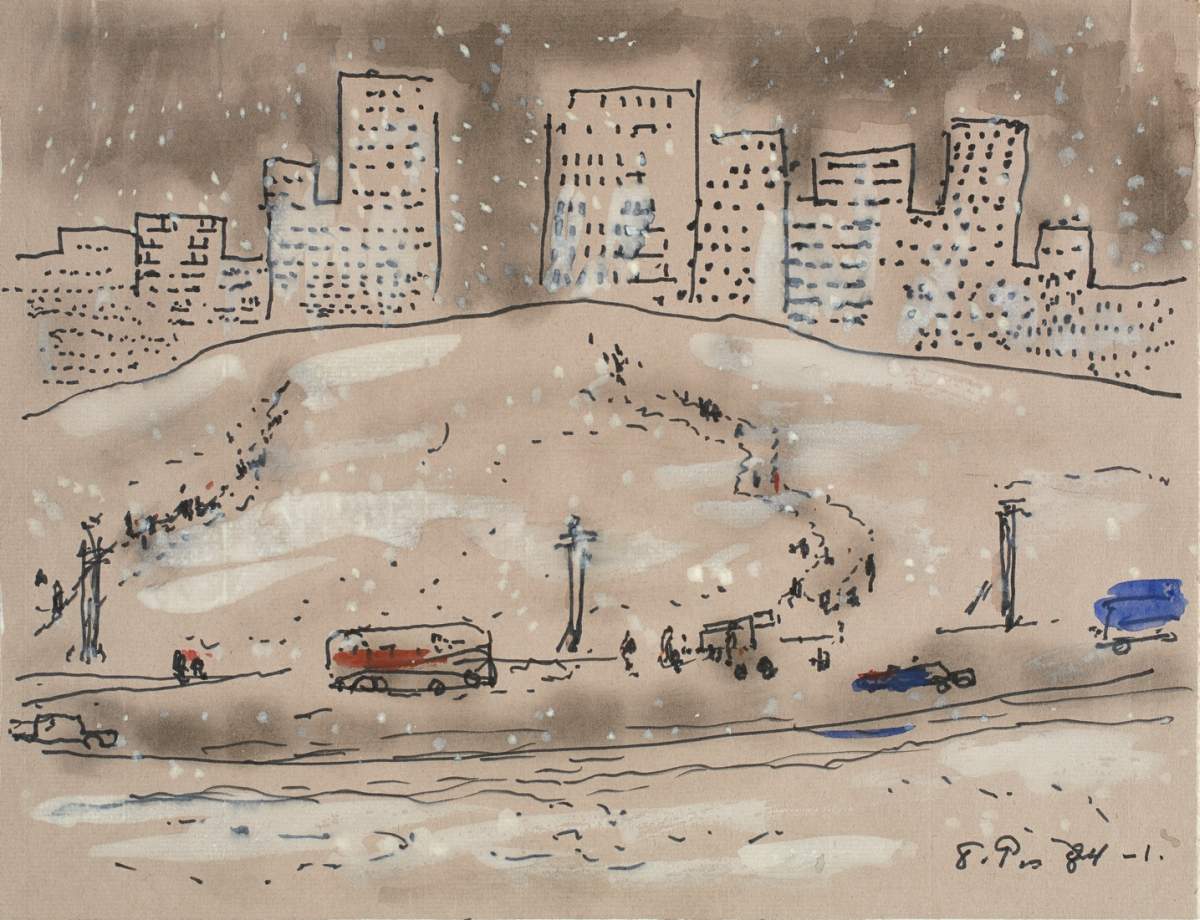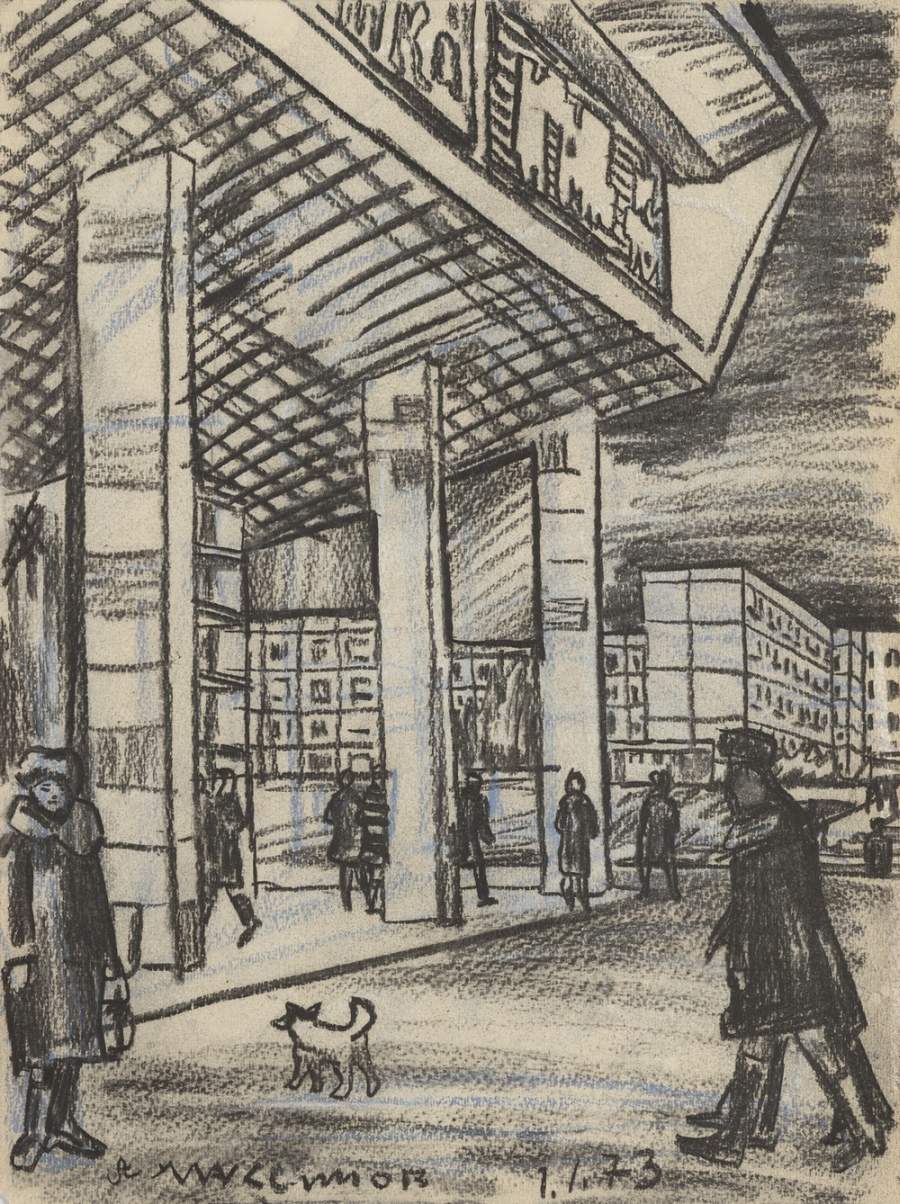"The city and the people. Moscow in the chart of the twentieth century" in the Tretyakov gallery
The exhibition in the Tretyakov gallery on the Crimean Shaft is 80 graphic works by Lentulov, Kuprin, Vladimir Favorsky, Labasa, Deineka and other artists graphics
the exhibition continues the series of shows of graphic works from the vaults of the Tretyakov gallery. This time it is timed to 870-летию capital and, together with the exhibitions "Moscow through the ages" and "Saved relics of Moscow gone," already open for visiting in the Engineering building, is part of a large multifaceted project. An exhibition presented at the New Tretyakov gallery, covers the period from 1920-х to 1980-х years. Many of the works shown for the first time.
the graphics as the most rapid form of visual art, able to convey many details and nuances that were able most fully to reflect the transformation that the city has undergone throughout the twentieth century as the destructive and creative trends.
the image of Moscow of the beginning of the 1920-х years — is not only famous monuments, sketched by A. V. Kuprin, A. V. Lentulov and, but and types of streets and panoramas of the city in the graphic series V. A. Favorsky and N. M. Chernyshev. Then the capital was dilapidated overcrowded city, and graphics as an art form because of its intimacy and the greatest proximity to everyday life could truthfully reflect the lives of ordinary people. In a series of A. F. Sofronova "Types of streets" (1924-1925) have the unique scenes of life of Muscovites of the time. Something new that arose in the face of the city — Shukhov's radio tower (1922), the mausoleum of V. I. Lenin (1924 to 1929), was a multiple subject image. A. I. Kravchenko, And M. Matorin, V. A. Favorsky in their leaves captures the stage of construction of these known structures.
In the early 1930-х years in drawings and engravings appeared the theme of the new Moscow with its expanding routes, numerous old and new bridges. Artists attracted erected on the eyes of the Muscovites large-scale projects — the building of the Council of labor and defense (now the State Duma), the hotel "Moscow" cinema "Drummer", as well as the Central Park of culture and rest, which in 1932 was named after A. M. Gorky. Such artists as D. B. Daran, N. V. Kuzmin, A. A. Labas, T. A. Lebedev, tried to convey the fast pace of life in Moscow by a sharp dynamic picture and a high contrast black and white. In the leaves of B. A. Zenkevich, dedicated to the construction of the first line of the Moscow metro, there was a theme of incredibly hard work, transforming the underground world into something beautiful and never seen before.
in the Autumn of 1941, Moscow became a front city. Bristling hedgehogs, closed air balloons capital represented in engravings by I. A. Sokolov and widely known graphic sheets A. A. Deineka, made in the postwar period, but truthfully reflected the realities of 1941. The artists drew inspiration not only in the gloomy severity of the scenes of the defense of Moscow. Printed sheets I. N. Pavlov, from the series "Old Moscow" (1944-1947) originated images of the past of the capital, its spiritual and physical strength. In a small work of T. A. Mavrina image of Moscow is mated with a distinctive artist with a festive perception of the world, bright colors which she found even in the difficult years of the war.
the Image of the postwar capital in the drawings of the artists performed a special old atmosphere. In the works of B. P. Chernyshev, K. K. Capezio, V. N. Sigorsky there are paintings of the return of the city to peaceful life. Image old favorite corners of Moscow, its streets and squares, the quiet, the crowded, doubtless gave to contemporaries a sense of joy and warmth.
views of Moscow from the masters of the era of the thaw has acquired a kind of "wide angle" view. It was then that the town began to grow steadily. In the field of view as masters of the old school (S. B. Nikritin) and artists of the new wave (G. F. Zakharov, G. V. Cheremushkin) increasingly got updated capital with the crowds of Muscovites, full of enthusiasm and hope for change. The present and the future were represented in the images of geometric clarity and at the same time of spring freshness and novelty. By the end of 1960-х euphoria "thaw" time gradually faded, and if sometimes there is the image of Moscow great people, both well-known lithography V. N. Vaidina "At the exhibition" 1979, the author discovered him at art shows, which was a characteristic sign of the times.
In 1970-е years, Moscow, becoming a conglomerate of disparate territories gradually left the field of view of artists as a whole. In the works of V. G. Veisberg, V. S. Altaiskogo, A. D. Maximov appeared topics related to representation of the separate parts of the capital and its inhabitants. Rare collective image of the city emerged in 1980-е B. F. Rybchenkov: in the misty distance he pictured the quarter, made up of nine-Brezhnev's time. By the end of the Soviet era already is in Moscow were "leaving nature".
Source: press-релиз GTG
Permanent link to:
https://artinvestment.ru/en/news/exhibitions/20171012_gtg_gorod_i_lyudi_exhibition.html
https://artinvestment.ru/news/exhibitions/20171012_gtg_gorod_i_lyudi_exhibition.html
© artinvestment.ru, 2024
Attention! All materials of the site and database of auction results ARTinvestment.RU, including illustrated reference information about the works sold at auctions, are intended for use exclusively for informational, scientific, educational and cultural purposes in accordance with Art. 1274 of the Civil Code. Use for commercial purposes or in violation of the rules established by the Civil Code of the Russian Federation is not allowed. ARTinvestment.RU is not responsible for the content of materials submitted by third parties. In case of violation of the rights of third parties, the site administration reserves the right to remove them from the site and from the database on the basis of an application from an authorized body.











